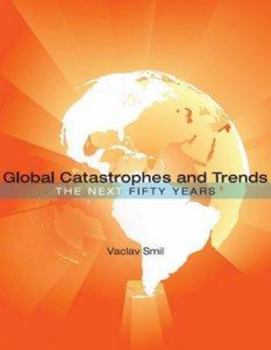Global Catastrophes and Trends: The Next Fifty Years
Select Format
Select Condition 
Book Overview
A wide-ranging, interdisciplinary look at global changes that may occur over the next 50 years - whether sudden and cataclysmic world-changing events or gradually unfolding trends. Smil covers both natural and man-made disasters.
Format:Hardcover
Language:English
ISBN:0262195860
ISBN13:9780262195867
Release Date:January 2008
Publisher:MIT Press (MA)
Length:307 Pages
Weight:1.58 lbs.
Dimensions:1.0" x 7.3" x 9.0"
Customer Reviews
1 rating
Fascinating analysis of trends
Published by Thriftbooks.com User , 15 years ago
Predicting the future is still impossible, but science has gotten much better at forecasting it, at least to the extent that it is informed by statistics and probabilities. Vaclav Smil speaks the truth as he sees it, according to mathematical information and indications. For instance, he refutes the "peak oil" scenario, but asserts that society's transition to an economy that is less reliant on fossil fuel is long overdue, environmentally and politically. Smil predicted the financial meltdown and the flu pandemic, so clearly he's on to something. He delves into a variety of issues in this analysis of trends and calamities, from the economic decline of the U.S. to conflicts in Muslim countries, the aging of many national populations and the depletion of essential ecosystems. getAbstract recommends this fascinating account of the future as seen through the cold eye of a statistician.






